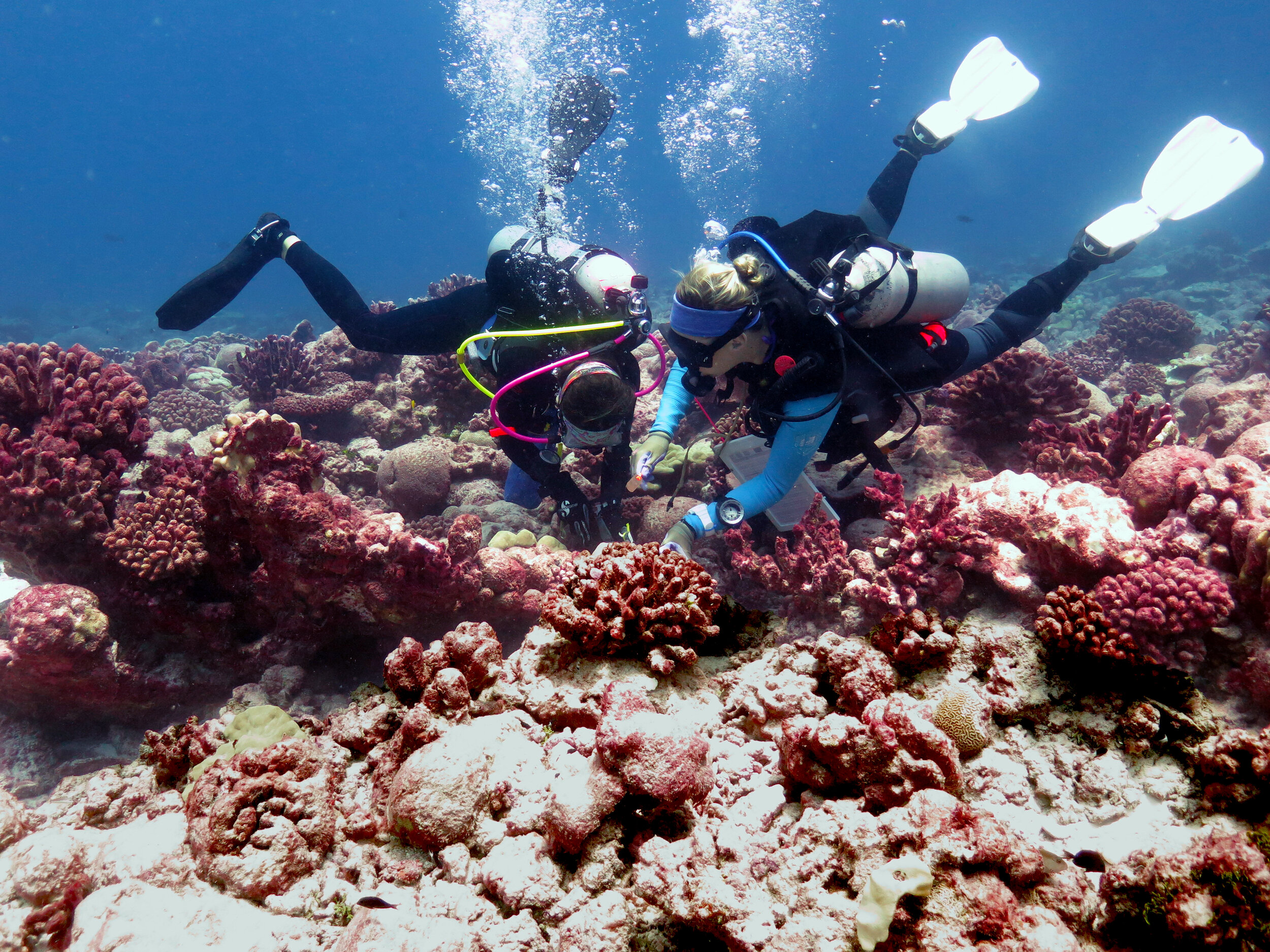Coral symbioses and global change
Reef-building corals obtain most of the energy they need to survive from single-celled photosynthetic algal symbionts, Symbiodiniaceae, that live inside them. This symbiosis is very sensitive to stress and breaks down under conditions such as warm temperatures (a phenomenon known as ‘coral bleaching’). Susceptibility to bleaching varies between corals, and is significantly shaped by their associated microbes (especially the type of Symbiodiniaceae they host, but also their communities of bacteria, fungi and viruses).
With the goal of understanding to what extent coral symbioses influenced which corals could survive prolonged heat stress, we tagged, tracked and sampled over 1000 corals on Kiritimati’s reefs throughout the 2015-2016 El Niño event. Much of this work was led by PhD student Danielle Claar, and conducted with an amazing team including Kristina Tietjen and Jamie McDevitt-Irwin, in collaboration with Ruth Gates lab at the Hawai’i Institute of Marine Biology, Andrew Baker’s lab at the University of Miami, Ross Cunning of Shedd Aquarium, and Becky Vega-Thurber’s lab at Oregon State University. Using molecular techniques to identify coral symbionts and other components of the microbiome, we have examined how interactions between local human impacts and global climate change shape coral symbiont (Claar et al. 2020 Scientific Reports, Claar et al. 2020 Molecular Ecology) and microbiome communities (McDevitt-Irwin et al. 2017 Frontiers Mar Sci, McDevitt-Irwin et al. 2019 Coral Reefs).
Unexpectedly, we also discovered that some corals were able to recover from bleaching while still subjected to elevated water temperatures (Claar et al. 2020 Nature Communications). This work was featured in Science. Read more about it on our Media page.




